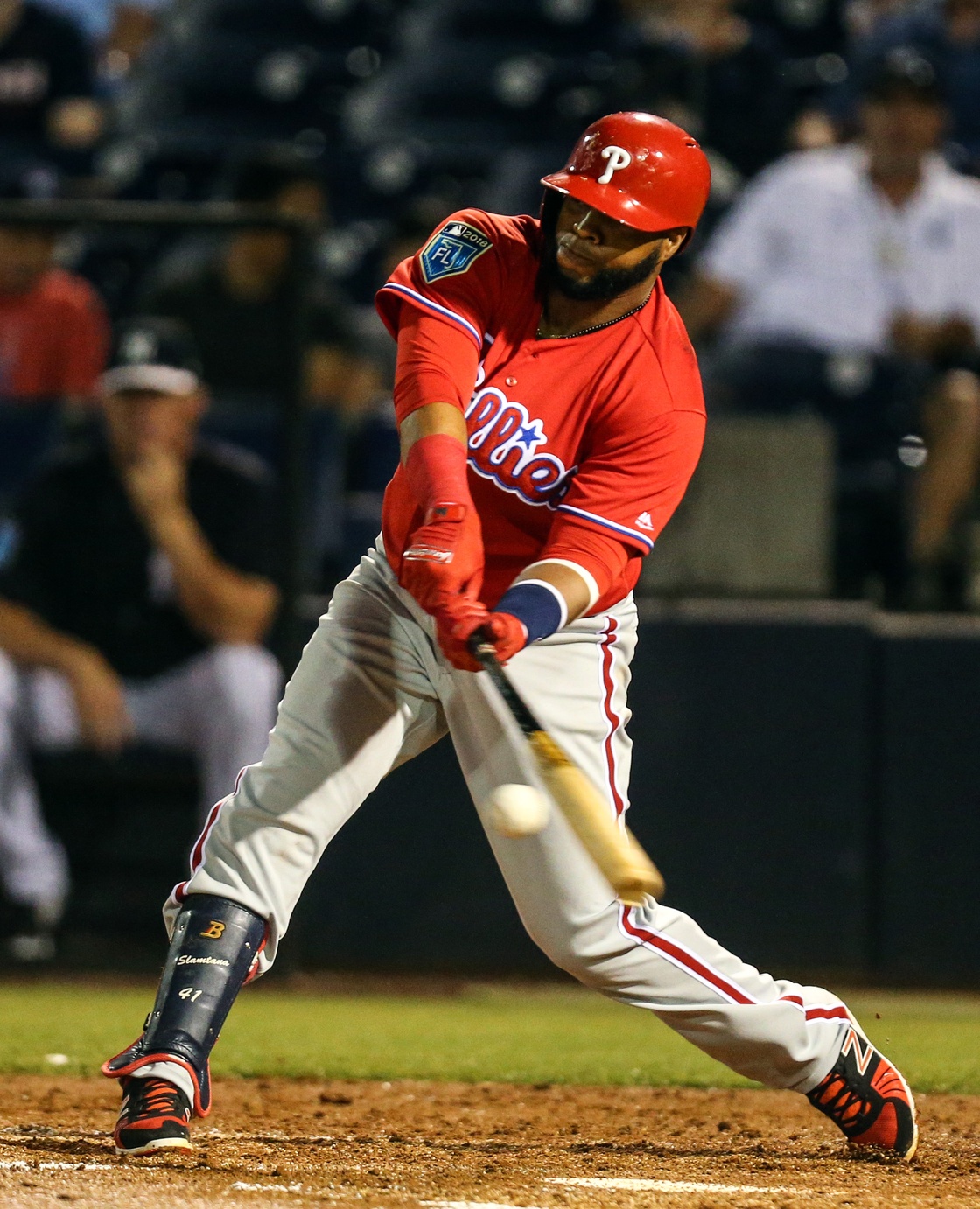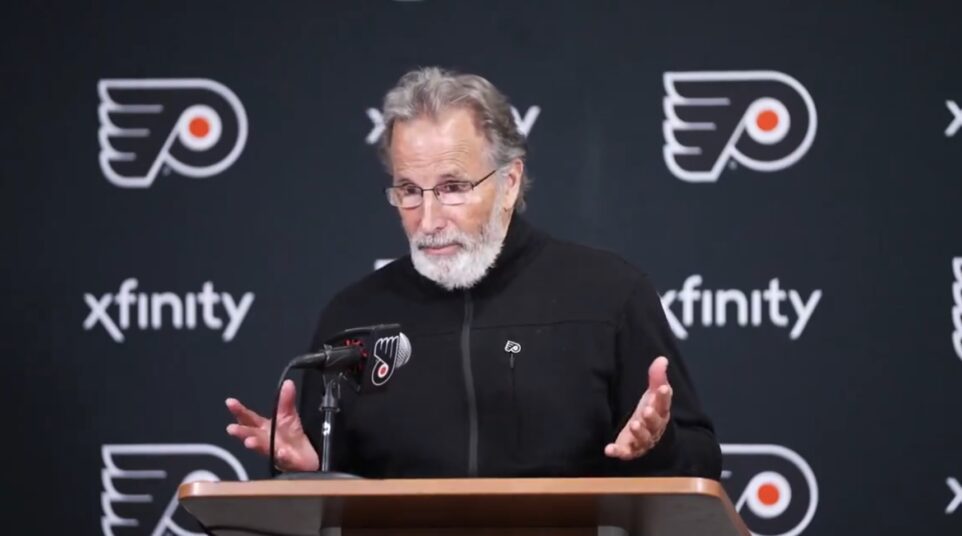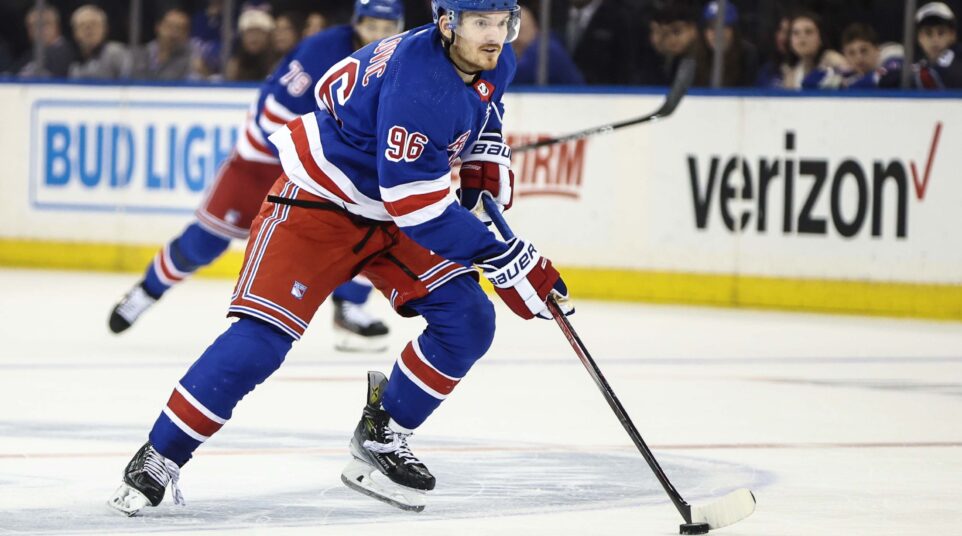
Some Thoughts On How The Phillies Should Handle The Leadoff Spot
For much of baseball’s modern era, leadoff hitters have been regarded as table-setters who could utilize their common attribute of speed to reach base in a variety of ways and subsequently wreak havoc once they arrived there. The ability to leg out an infield single, swipe a bag, and disrupt both a pitcher’s focus and rhythm were skills many baseball minds long believed would maximize the run-scoring potential of a lineup.
In more recent years, many of baseball’s once unshakeable tenets have become antiquated belief systems as teams have increased their commitment to data mining and analyzing ways to put their findings into practice. This quantitative data growth has had a perceptible impact on everything from roster construction to in-game management. Even the way many teams practice and prepare has changed. The fingerprints of this transformation are everywhere. Still, it’s an oversimplification to wholly conclude data dependency has spurred a complete priority shuffle of performance metrics the exact same way for every team. While each club utilizes data-driven analytics, some are more progressive than others on this front. An obvious example of such a philosophical disparity is perhaps most evident in how teams approach the idea of the leadoff hitter.
Let’s use a familiar recent example to work through this. Former Phillies manager Ryne Sandberg penciled Ben Revere into the leadoff spot of a forgettable 2014 team 123 times that season. At first glance, this appears to be one of the few good decisions made by Sandberg during his failed time as manager. Revere hit .313, swiped 47 bases, and struck out a mere 43 times in 570 plate appearances out of the leadoff spot. Base-hits, contact, speed. Nothing against Revere–he provided the Phillies with exactly what they wanted that season, but the problem is that was not what they should have wanted.
Revere led the Phillies in average in 2014 (.306), but he was not the team’s best hitter. His 92 OPS+ was fifth-best on the team, and his inability to draw walks led to a pedestrian .325 OBP. While Carlos Ruiz (.252) and Chase Utley (.270) were each out-hit by Revere, both were markedly more valuable hitters by more inclusive metrics. Both Ruiz (101 OPS+) and Utley (108 OPS+) also posted considerably higher on-base percentages. It’s true that Ruiz in his age 35 season, and Utley, also in his age 35 season and also hampered by bad knees, didn’t fit the traditional leadoff mold the way Revere did, but both were arguably better options in terms of generating runs.
Last season, Cubs manager Joe Maddon raised eyebrows when he opted to make slugger Kyle Schwarber, he of four career stolen bases, his leadoff hitter. Schwarber, who was coming off a torn ACL which cost him all but two games of the 2016 season, would never be mistaken for the prototypical leadoff man of yesteryear. The experiment was an unmitigated disaster as he struggled to regain his rookie form that made him one of the National League’s most feared young hitters. He slumped to a .190 average with a .693 OPS in 36 games in the leadoff spot. Still, Schwarber’s struggles have not seemed to alter Maddon’s philosophy this spring as he is once again considering Schwarber as his team’s leadoff hitter:
“I’m very comfortable with moving that around based on guys who get on base often. That’s the whole point. And when you can combine that with a guy that has a high on-base and then he hits homers, too, that’s even more attractive.”
It’s worth mentioning that even without a bona fide leadoff man, the Cubs still posted 822 runs last season, good for second most in the National League. The benefit of having Kris Bryant and Anthony Rizzo in your lineup is that it covers up a bad decision or two. The Phillies, obviously, don’t have that same luxury or talent.
While new manager Gabe Kapler has no shortage of promising young hitters, there’s a great deal of uncertainty that exists in his lineup and it’s important he gets maximum value from each spot. So what should Kapler do? Let’s get into it.
Conventional wisdom would suggest that Cesar Hernandez makes a lot of sense. In 124 games at leadoff last season, Hernandez hit .295 and posted a .793 OPS. He demonstrated good patience by drawing 59 walks and only swung at pitches out of the strike zone 21.6 percent of the time, which was 10th best among qualified hitters a year ago. His stolen bases numbers aren’t terribly impressive, but he did collect 38 hits on balls hit in the infield. For his career, Hernandez has attempted 79 stolen bases in 444 games (6.46 games per attempt).
Here’s CrossingBroad’s Anthony SanFillipo on the case for Hernandez:
I’m a traditionalist. I believe in a table-setter at the top of the lineup. Someone who not only gets on base but can move around the bases with alacrity. Santana gets on and batted leadoff some for Cleveland, but I don’t think it’s ideal to have a slow runner clogging the bases.
I also asked John Stolnis of The Good Phight and host of the Hittin’ Season Podcast for his thoughts. He also backed Hernandez:
While I think Carlos Santana and Rhys Hoskins make intriguing options at the top of the lineup, I think there’s only one option that really makes sense. Over the last two years, in 283 games and 1199 PAs, Cesar Hernandez has an OBP of .372. You want your leadoff hitter to get on base a lot, and while I don’t think speed is a prerequisite to be a leadoff hitter anymore, Hernandez is one of the fastest players on the team. Now, I don’t expect Hernandez to steal many bases, he only has 32 in two seasons and has been caught 18 times. But he can go 1st-to-3rd and, with Hoskins hitting No. 2, Herrera No. 3 and Santana No. 4, should get a lot of opportunities to score from 1st on an extra base hit. Sure, Cesar could get traded this summer and, if that happens, we’ll jump off that bridge when we come to it. For now, Cesar’s your leadoff hitter.
Also to his credit, he made a pretty bad ass statement as a leadoff hitter in last year’s season opener:
Cesar Hernandez does something no Phillies player has done since 1938: hits a leadoff homer to open a season. https://t.co/KzCcz1hGSm pic.twitter.com/8X70bs3DvR
— Todd Zolecki (@ToddZolecki) April 3, 2017
As for Santana, well, he has leadoff experience, but wasn’t great in that spot last season. He only hit .233, but his 24 walks in 174 plate appearances helped give him a more respectable .339 on-base percentage. For his career, however, Santana has posted an impressive .371 OBP and .840 OPS in 133 games as a leadoff hitter. To Anthony’s point about the speed—it may be a concern for some. He hit only .065 on balls in the infield last season (15 hits), and has attempted only 57 stolen bases over 1,116 games, which is about one for every 20 games played. Still, what he lacks in speed, he makes up for in approach, as explained by 94WIP evening show producer Jack Fritz:
My theory for batting Santana in the lead-off position stems from this article by Ben Harris of The Athletic. In this piece, Harris lays out some advanced stats that I think lead to Santana being a really good lead-off hitter for this Phillies team. In modern baseball, getting on base and working pitchers is more important than the traditional top-of-the-lineup that features a guy who is fast. In Santana, the Phillies would have a guy that can get on-base, works counts and has pop.
Since Carlos Santana has been in the big leagues, no one is baseball has had a better percentage of getting counts to 1-0 rather than 0-1 than Santana. This isn’t just some fluke, outlier thing by Santana, it’s a consistency in his game that shows up year in and year out.
Part of the reason that Santana been so good at getting counts to 1-0 is that he ranks in the 97th percentile in O-Swing%, which is swinging at balls outside of the strike-zone. Santana almost never swings at balls out the strike-zone thus forcing the pitcher to make more favorable pitches in his direction. So to recap, Santana has one of the best grasps of the strike-zone in the entire sport, has no problem taking a walk, works pitchers and will probably hit around 25 homers.
And, of course, when a player has some of the aforementioned pop Jack wrote about and also a grasp of the strike zone, the result will often look something like this:
https://twitter.com/SInow/status/905620403594428417
What about Odubel Herrera, you ask? In general terms, I’ve long been a proponent of Herrera. You may not like his new beard, propensity to lose focus from time to time, or this:
The Phillies' Odubel Herrera is probably regretting that bat flip.
(📹: @astros) https://t.co/4qXHJFg5QD
— The Sporting News (@sportingnews) July 25, 2017
But it’s hard to argue his productivity. Despite battling prolonged slumps a year ago, he still managed to post a .778 OPS and collect 59 extra-base hits. Even with his skill set, it’s hard to justify his existence at the top of the lineup. His walk numbers dropped by more than half last season, drawing only 31 free passes, down from 63 two years ago. Herrera demonstrated a troubling difficulty tracking pitches a year ago, swinging at 40 percent of pitches out of the zone. That’s almost twice as much as Hernandez and it was the ninth-worst rate among qualified hitters a year ago. That has to change.
Rhys Hoskins has gotten a look in this spot already this spring, but I don’t think he makes sense there for this particular lineup. You may point to his patient approach and .396 OBP, but I’ll point to his 1.014 OPS as a reason to keep him in the middle of the order. By the way, don’t expect a replication of those numbers this season, but Hoskins is the real deal. If the Phillies featured a lineup similar to Chicago’s, stacked with two premiere sluggers in the middle that forces pitchers to attack the leadoff man, I’d buy into this. But they don’t. As such, I think they are best served finding high on-base guys for the player that represents their biggest power threat.
The decision probably comes down to Hernandez and Santana. I don’t want to sound like a smart ass here, but I almost think the Phillies will ultimately roll with Santana in the leadoff spot on a tie-breaker decided by the move’s progressive nature. Whatever Kapler decides, it won’t be the difference between the Phillies becoming a top-five offense or a bottom-feeder, but it’s still an important one. The rookie manager has several major questions to settle between now and the start of the regular season in Atlanta on March 28. He’s addressed on multiple occasions throughout the winter the organization’s goal of finding value in the margins and this front office has placed an obvious emphasis on the utilization of data to navigate both pre and in-game decisions (just look at the outfield position swaps). With so many unknowns due to Kapler’s lack of coaching experience, this situation is particularly intriguing as we look to gain some insight into philosophical approach to a young and talented team in the formative season of a new era.





